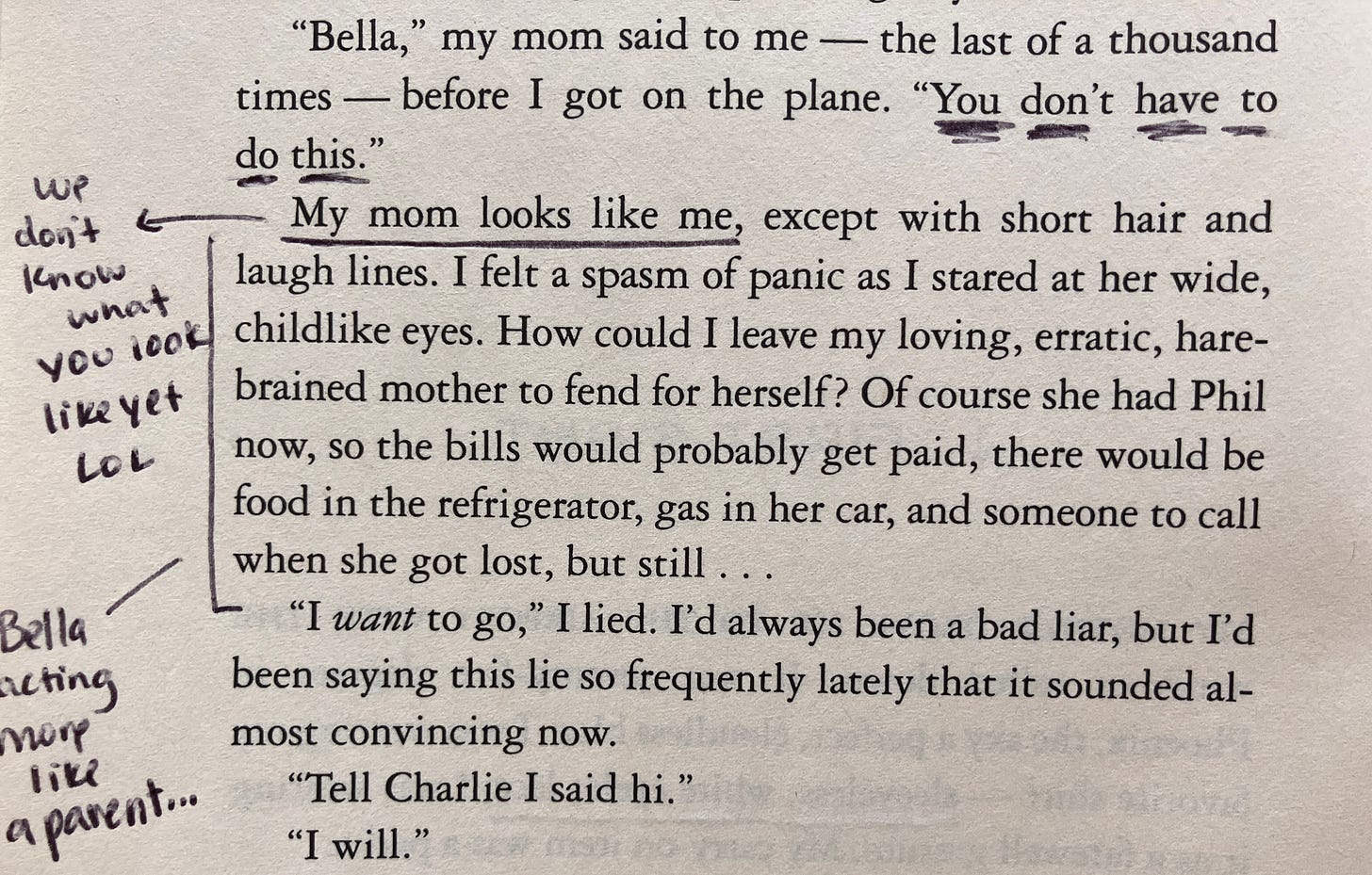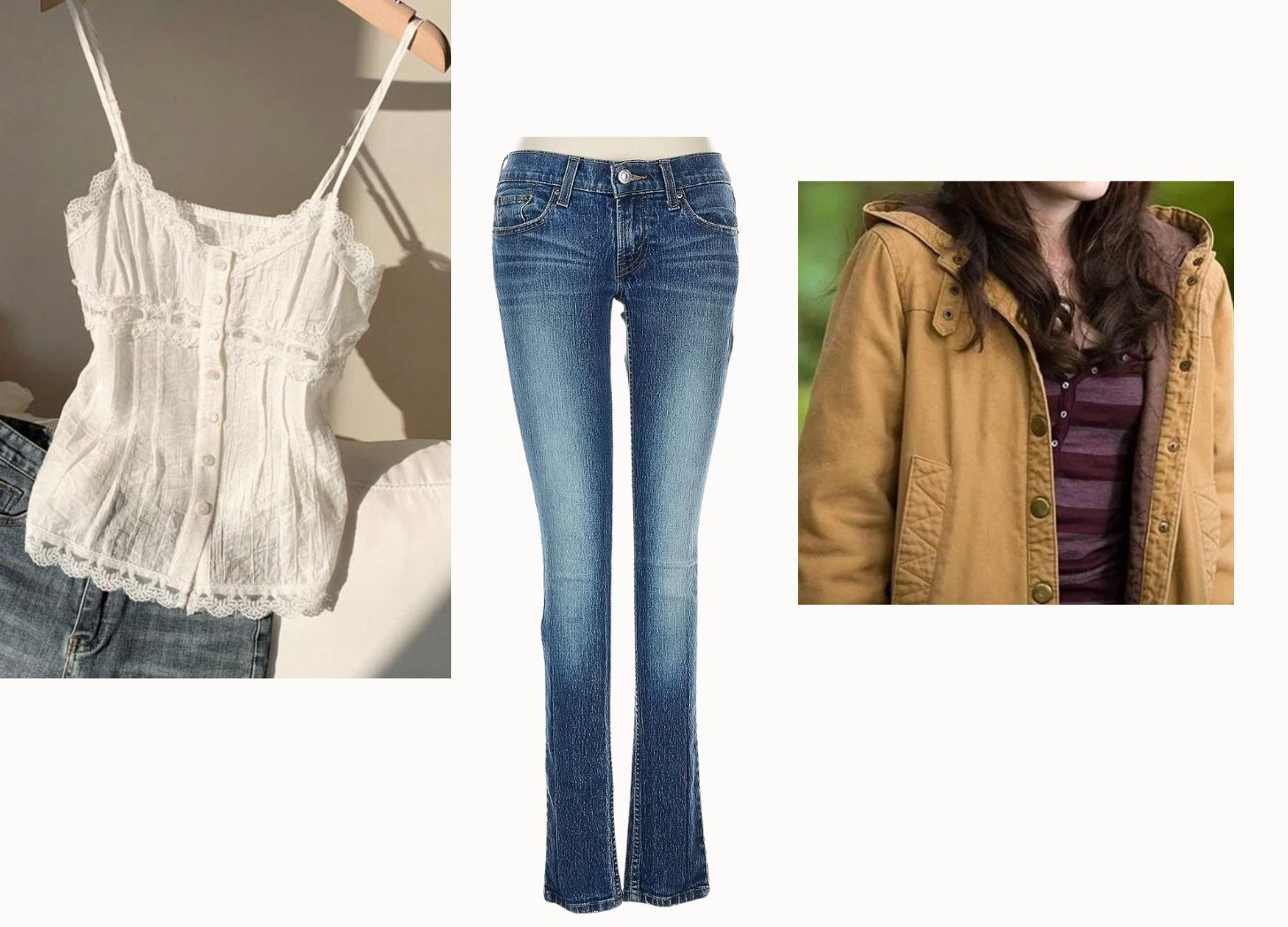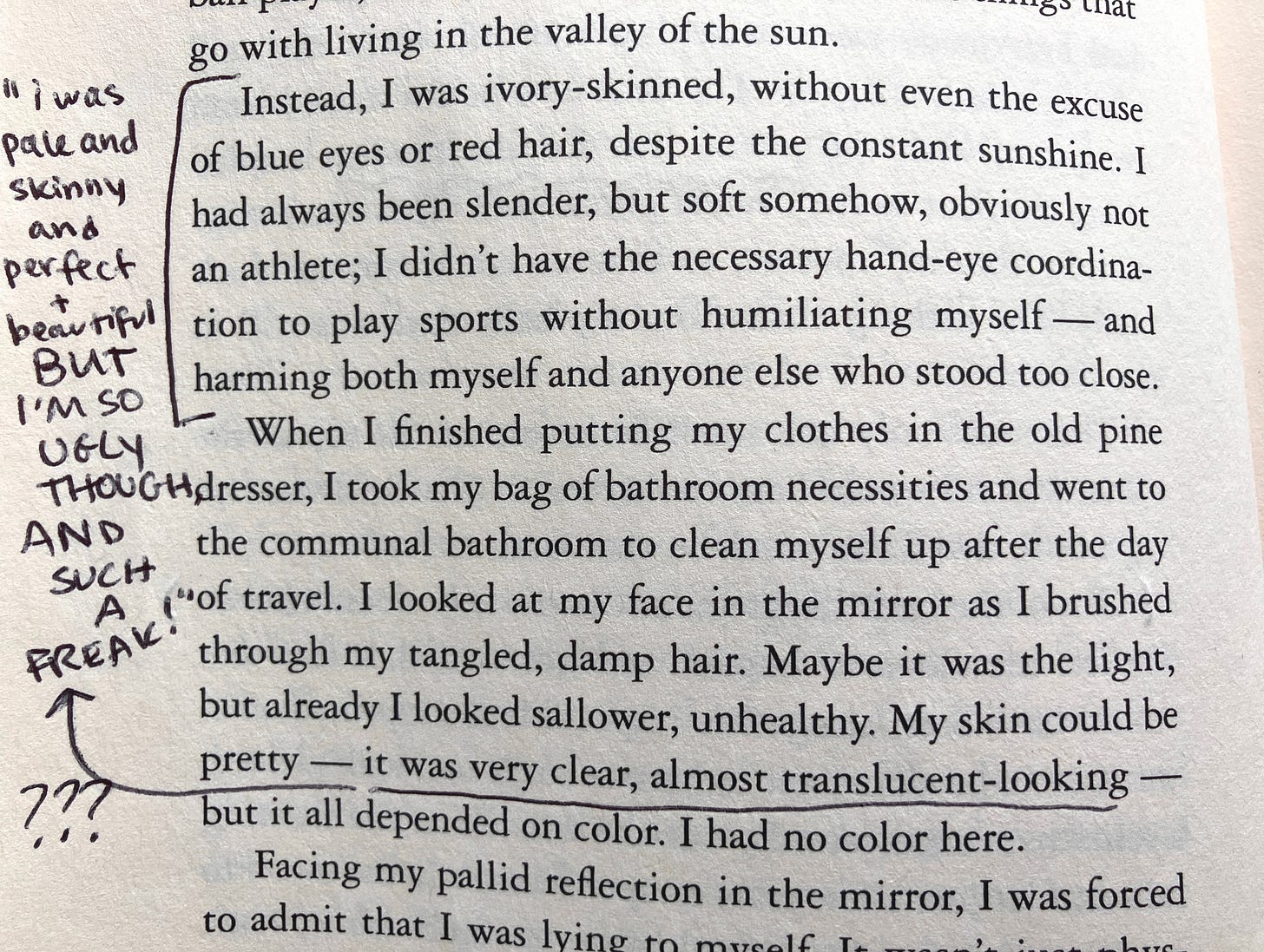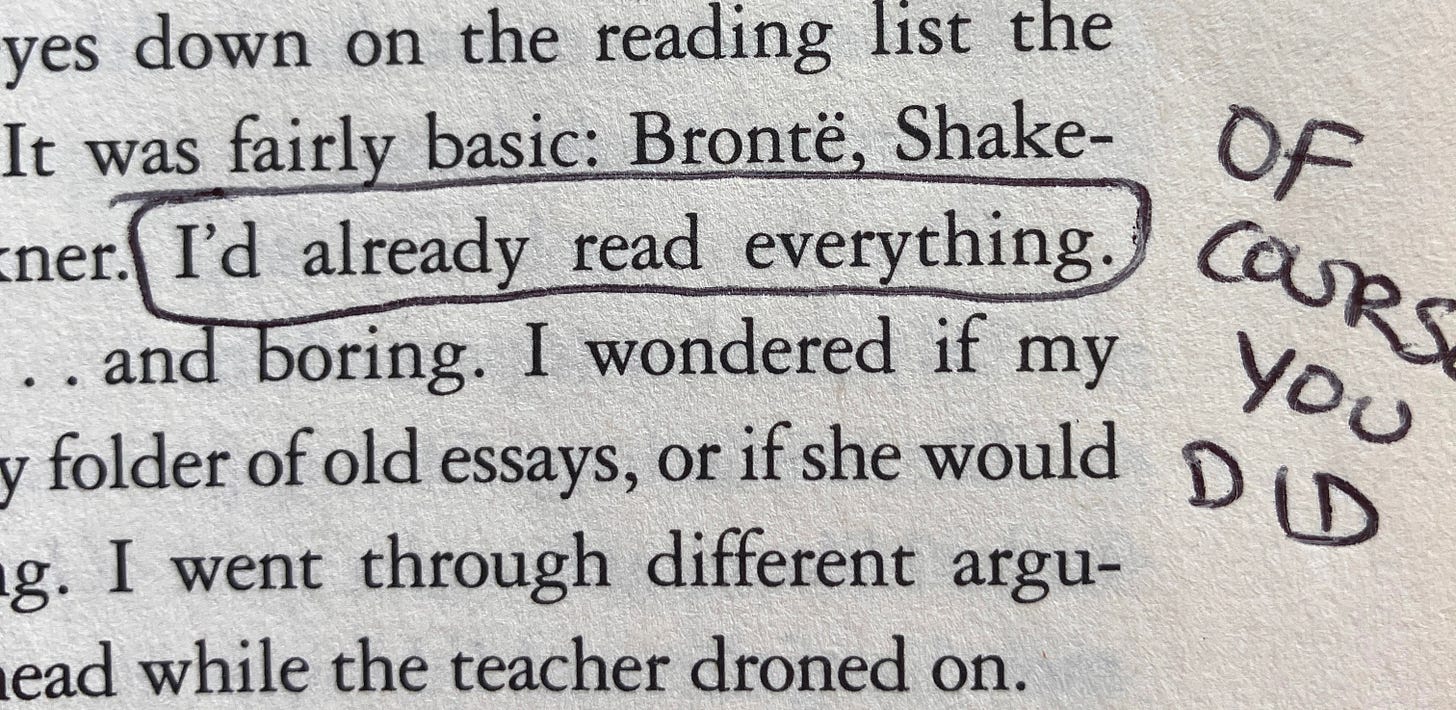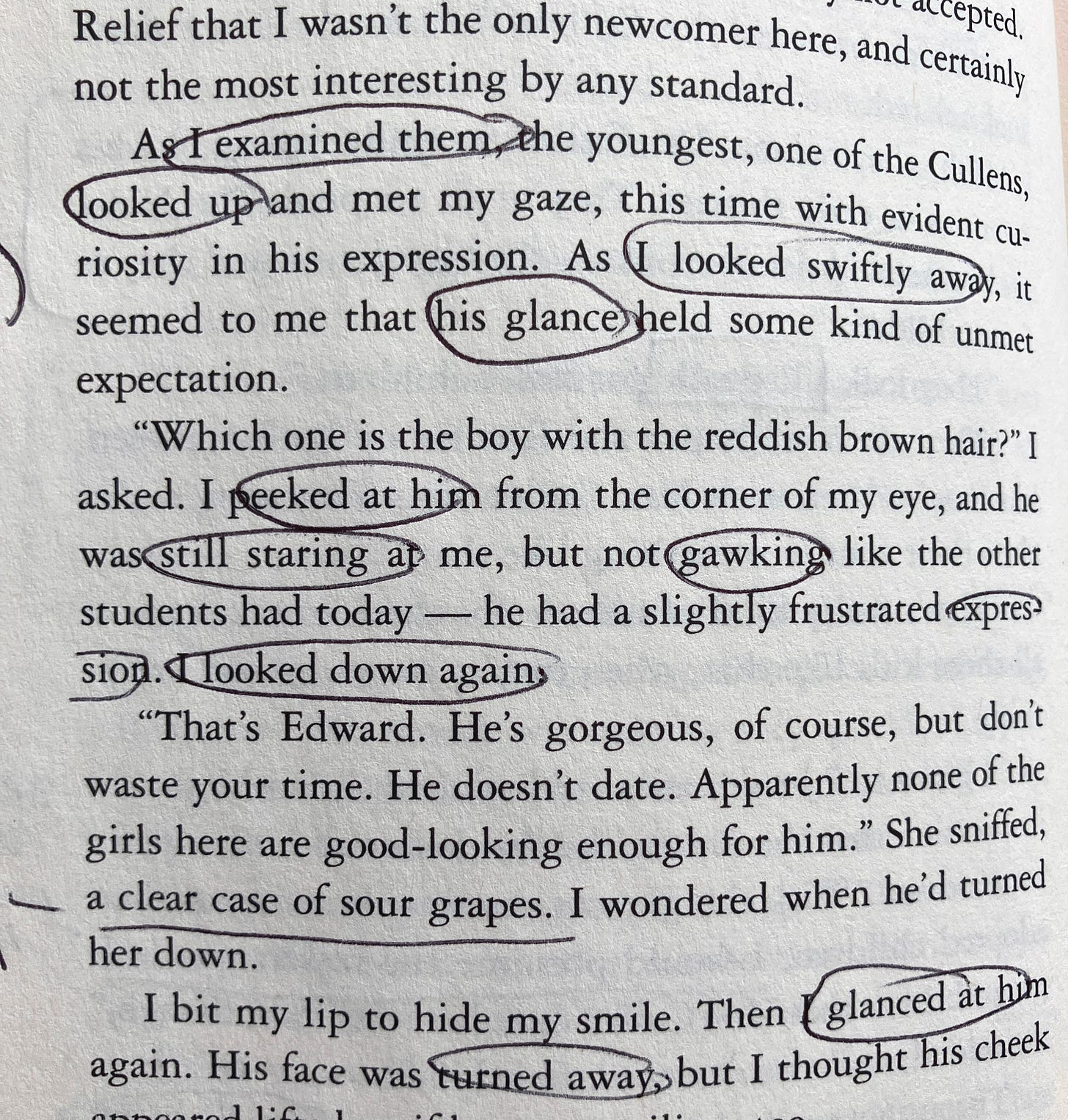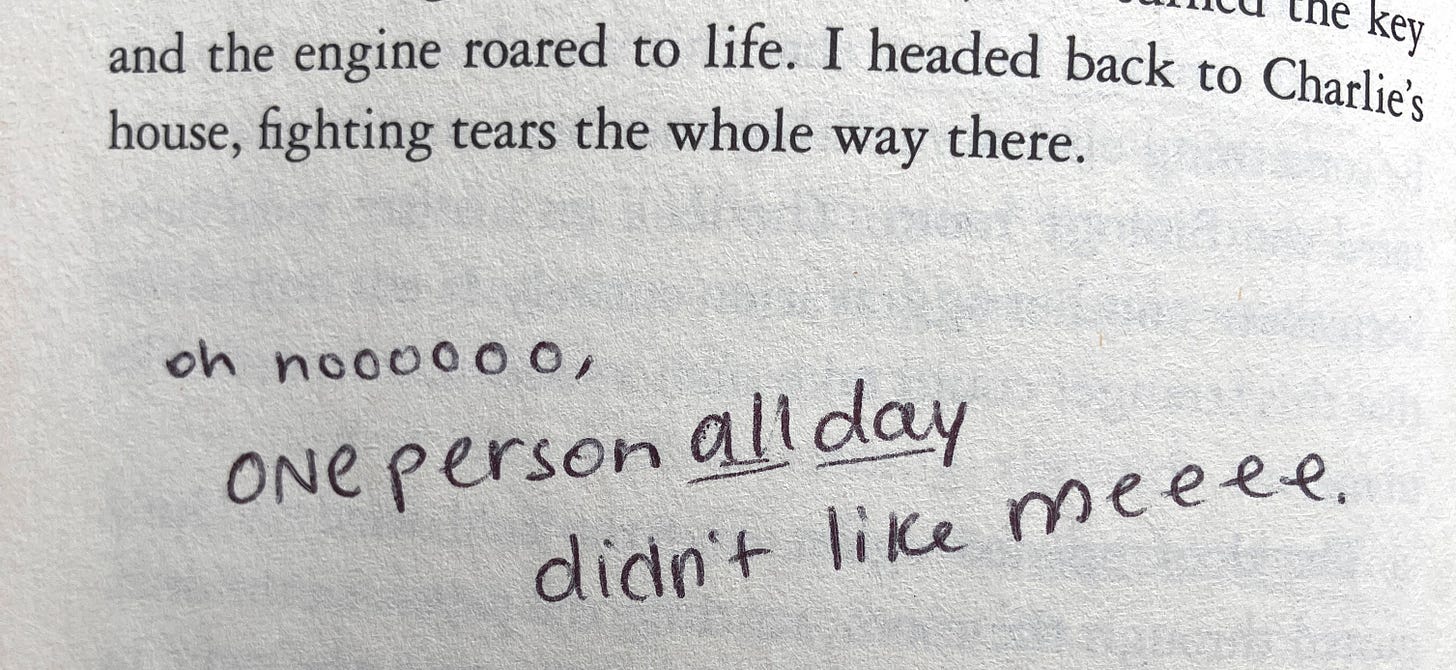I read Twilight so you don't have to // CHAPTER 1: FIRST SIGHT
But the tree of the knowledge of good and evil,
thou shalt not eat of it;
for in the day that thou eatest thereof
thou shalf surely die.
Genesis 2:17
The quote comes from Genesis in the Bible, which immediately sets the tone for some heavy-handed symbolism. If my math is right, Edward = apple (forbidden fruit?), and Bella is about to take a big ol’ bite. Given the way this story unfolds, it’s safe to say her life will never be the same once she partakes in Edward’s apple.
PREFACE:
Clocking in at half a page long, the rest of the preface describes what we assume is the climax of the story: someone going “:)” and “sauntering forward to kill (Bella).”
CHAPTER 1: FIRST SIGHT
Bella Swan is a girl from Phoenix, Arizona, living with her mom, but she’s decided to move in with her dad, Charlie (also my family cat’s name, shoutout) in Forks, Washington. From the very first page, she makes it painfully clear that she loves Phoenix and detests Forks—the rain, the cold, the size, the general Forks-ness of it all. And yet, she has chosen to “exile” herself here.
Why? We actually don’t know yet. Her mom insists that Bella does not have to do this, that no one is forcing her to go. The only reason we’re given is that her mom has a new boyfriend, so maybe Bella feels like she’s in the way? That’s my best guess at this point.
Is this a defense mechanism? A way to maintain control in a situation she hates? A little “not like other girls” syndrome? Whatever the case, Bella arrives in Forks already convinced that she doesn’t belong, and she makes sure everyone (including the reader) knows it.
We can already see that Bella has taken on a bit of a caregiver role with her mom, which is, uh, kind of sad for a teenager (parentification?). She’s not just a kid with a parent, she’s a kid who feels responsible for her parent, which suggests she’s been acting more like an adult than a teenager for a while now. At the very least, she seems to take on the emotional and logistical burden of the people close to her, which might explain why she so readily steps into this self-sacrificial, “I’ll remove myself for the greater good” mindset. I can’t help but wonder if this reflects some ingrained ideas about traditional household roles (Stephanie Meyer is Mormon, btw): the dutiful woman taking care of others, even at her own expense. Idk.
Bella gets on the plane in a “sleeveless, white eyelet-lace” top (pg. 1). She notes that her carry-on is a parka, for the chilly-billy town of Forks, Washington.
Note: The book gives us descriptions Bella’s outfits, which I will faithfully describe for you here, yay clothes. We won’t be looking at the movie adaptation versions (unless the costuming is very on-point with the books).
We then breeze through Bella’s travel and arrival her new home (and the setting for the rest of the book!). Charlie, her pop and Sheriff of Nottingham Forks, picks her up, and through a lot of telling-not-showing, we see that he’s bought Bella a truck (an old one, but she ends up really liking it, so good job, Charlie).
The truck becomes one of the few things Bella actually appreciates about Forks, which is saying a lot, considering she otherwise treats this move like she’s been sentenced to life in a damp prison (that she’s sentenced herself to, but I digress).
It’s always fun to see how characters describe themselves, since it can reveal a lot about their self-perception, insecurities, and sometimes even the author’s own biases. But here, I notice we run into something that a lot of YA books from this era (and today) tend to do: the “reluctant beauty” trope. Bella tries to frame herself as plain or unremarkable, but in reality, every feature she lists aligns perfectly with conventional beauty standards—“slender (borderline unhealthily thin), soft, ivory-skinned” (pg 10).
Bella settles into her childhood bedroom while ruminating about how horrible school is going to be. We get a lot of “and then this, and then Bella did that, and then that” until she arrives at school the next day.
I’ll complain as little as I can about Bella’s self-absorption, even though it’s apparent in the way she assumes everyone around her is constantly thinking about her. Despite insisting that she’s awkward and forgettable, multiple kids go out of their way to talk to her on her very first day. Two boys, Eric and Mike, seem immediately interested in her, and she doesn’t even have to try to insert herself into social circles; they form around her effortlessly. For someone who claims to be an outcast, she doesn’t have any trouble attracting attention.
To play devil’s avocado for a second, this book is written from the POV of a teenager. And who among us wasn’t a little self-absorbed at that age? We all saw ourselves as the main characters, not just in our own stories, but in everyone else’s too. The difference, of course, is that Twilight wasn’t actually written by a teenager, it was written by an adult woman. Just something to keep in mind.
ENTER: THE CULLENS
Bella makes it to lunch period, and at last we get our first glimpse of the Cullens: an odd family of too-beautiful definitely-high-schoolers with designer clothes and bags under their eyes.
Bella is entranced by them, but especially by Edward Cullen, a gorgeous, “unusual-haired” (?) (pg. 23) boy who, she discovers with delight, is in her Biology class and–gasp–they’re seat partners!
We get this iconic scene where Edward responds to Bella’s entrance like she’s a big, walking turd:
And then, after an awkward interaction with the school secretary (where Edward attempts to switch classes just to avoid her), Bella is left spiraling.
As you can imagine, it’s devastating.*







